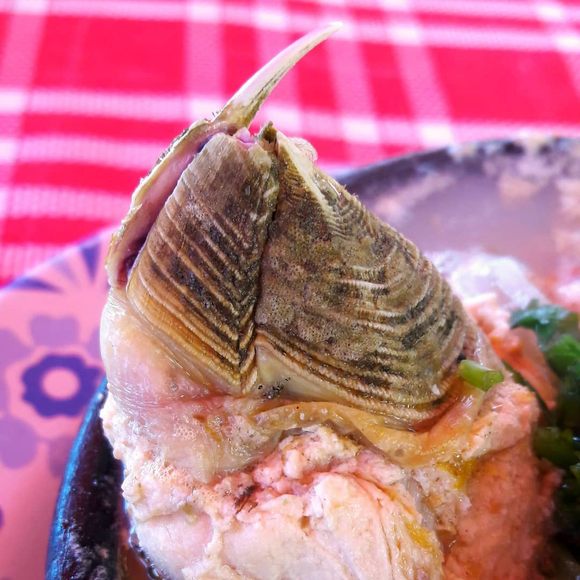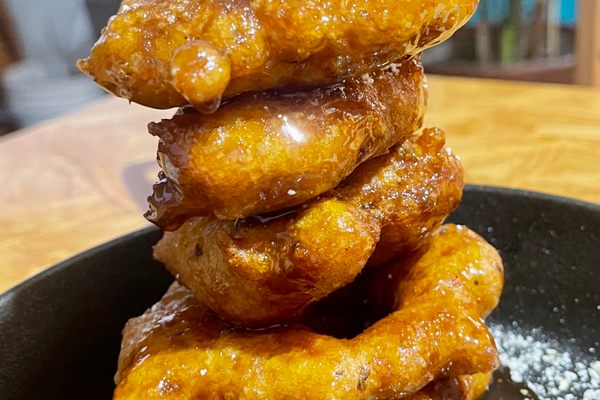Anyone who has taken a shoeless stroll along a rocky coastline is likely familiar with the foot-damaging dangers of barnacles, but in Chile, those hard, prehistoric-looking houses hide a tasty morsel inside.
Colloquially referred to as the picoroco, Spanish for “beak in the rock,” the giant barnacle makes its home along the shores of Chile and southern Peru, where it attaches to rocks, joining together with other barnacles to form clusters. Beginning as tiny plankton, picorocos develop hard calcite layers that grow to resemble miniature volcanoes. Harvesters use spadelike devices to pry the barnacles from their foundation. At the market, fresh picorocos poke their little limbs out like dual-pronged beaks, hence their nickname.
Cooked picorocos deliver a sweet, crablike flavor, with a slightly chewy interior surrounded by a creamier outer layer. Their brine gives a walloping dose of salinity that chefs often thin out with broth or water. The giant barnacles have served as an important part of Chilean curanto, an ancient underground cooking method that relies on hot rocks to cook a variety of clams, mussels, fish, potatoes, and other ingredients (much like a clambake).
Today, the barnacles are still cooked together with local seafood, though more often simmered on the stovetop in aromatic soups or baked in the oven into rich, creamy pasteles. In New York, restaurants serve them as specialty appetizers, such as picoroco ceviche.
Where to Try It
-
Barra Chalaca
Andrés Bello 5116, Providencia, Chile
Written By
l lindseycathrynSources
- www.researchgate.net/publication/255572919_Making_Mountains_out_of_Barnacles_The_Dynamics_of_Acorn_Barnacle_Hummocking
- traditionalanimalfoods.org/marine-invertebrates/crustaceans/page.aspx?id=6519
- doi.org/10.1111/j.1365-2109.2010.02508.x
- www.pugetsound.edu/academics/academic-resources/slater-museum/exhibits/marine-panel/acorn-barnacle/
- www.nytimes.com/2001/08/22/dining/truly-deeply-trendy-the-barnacle.html
- www.sealifebase.ca/summary/Austromegabalanus-psittacus.html
















